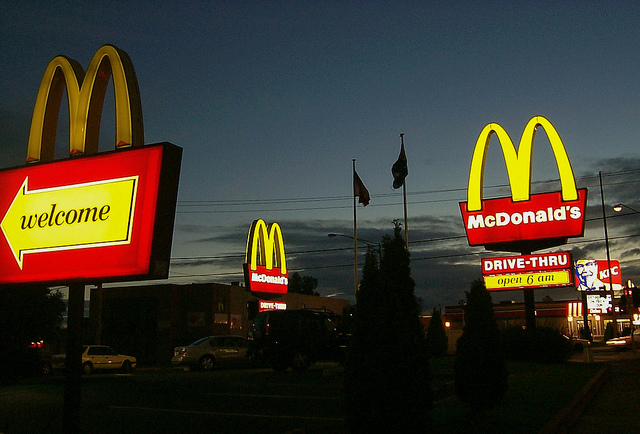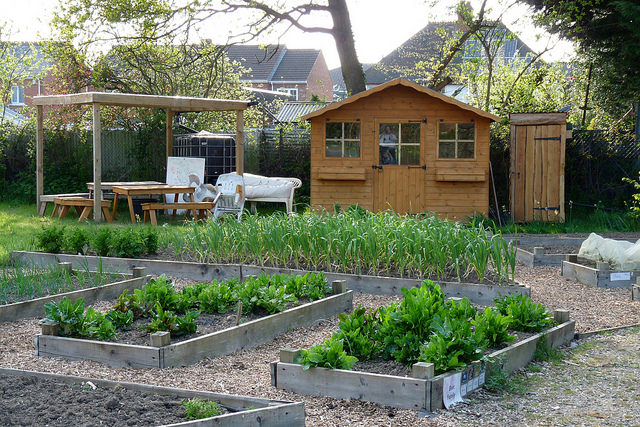If you’ve watched the news in the past ten years or so, there’s a pretty good chance you have heard how food access is a problem in America. Maybe you haven’t heard the term “food access,” but rather, “food deserts.” And maybe when you hear the term “food desert,” you first think of your favorite dessert, but then you realize you’re mistaken and resort to picturing a place in the middle of nowhere that is miles and miles away from any source of fresh food.

Photo courtesy of Ryan McGuire on gratisography.com
From February 7-9, I had the privilege of attending the Agriculture Future of America’s Food Institute in Chicago, Illinois where I joined 76 other high-achieving agriculture students from various universities across the country. I, along with 11 other attendees, had to research and discuss the concept – or lack thereof – of food access in America.
We had a little help from Mari Gallagher, President of Mari Gallagher Research & Consulting Group, a group known for research on food deserts. She is largely responsible for the popularization of the term “food deserts” and its insertion into the United States Farm Bill in 2006, which mandates most government policies and regulations surrounding agriculture.
The thing about food deserts, as my peers and I learned, is this isn’t a “one size fits all” issue. Food deserts do not only occur in one specific area, to one specific ethnicity, socioeconomic class, or type of people. While food deserts do cluster geographically and can correlate to racial demographics, they can be found in even the least suspecting places around the country.

Photo courtesy of Open Grid Scheduler on flickr.com
The USDA defines a food desert as being more than a mile away from a mainstream grocery store in an urban area, or more than ten miles away in a rural area. The government also chooses to exclude areas that fit these criteria but are above a certain level of income.
Mari Gallagher’s research takes on a slightly broader definition of the term. She defines food deserts as “large, geographical areas that cluster and have no, or distant access to, mainstream grocery stores.” Mainstream grocery stores can be considered stores that provide food that can support a healthy diet over a long period of time.
Many people living in food deserts have access to an abundance of convenience stores, gas stations, and fast food options. The American government considers many of these stores “grocery stores,” where people can use food stamps to buy unhealthy and processed foods. Enter – malnutrition and obesity.

Photo courtesy of s2art on flickr.com
People from low-income brackets aren’t the only ones that are affected by these food deserts. According to Mari Gallagher’s 2010 TedxTalk, 12,000 households in Chicago, in areas her research defines as a food desert, earn more than $100,000 annually. Food deserts do not discriminate, so anyone with poor access to a variety of fresh foods can feel their harmful effects.
What impact can you have even if you have no plans of entering the food industry? The most powerful tool we have when it comes to issues like this is education. Knowing all the tools we have to combat food deserts can help us make choices in our careers and personal lives that better the living conditions of those around us.

Photo courtesy of Karen Blakeman on flickr.com
You can easily identify if there are any food deserts near you with the USDA’s interactive food desert map. A great way to get involved locally is by going to dosomething.org and sign up to collect food outside a local grocery store for a food bank. They’ll give you all the tools you need to connect with a food bank and education resources for both you and your community.
Communitygarden.org identifies community gardens accepting volunteers, like this one located just seven miles from the heart of Purdue. But don’t be afraid to go big and start a garden program all on your own. Garden on the Go is a really cool program that travels across Indiana to deliver fresh, affordable produce. The only downside is it’s run by a division of IU – I think it’s time for us to show what we can do to improve food access, and living conditions for so many Americans, all while representing our Boilermaker pride.


